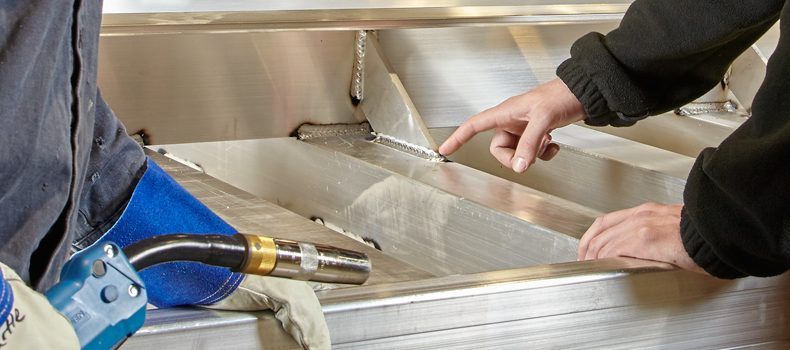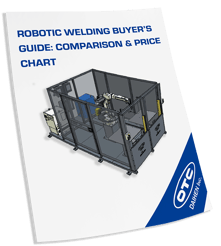
There are many methods to achieve metal fusion via welding, and choosing the right welding process is crucial to a production line. To help determine the best type of welding process to get the highest quality weld, take into consideration the following factors for the most common manual and robotic welding processes.
Look at What the Weld Needs to Do
The first step is to look at what qualities the weld needs in the end, based on the type of metal you are working with. In general, there are four main areas to consider in a weld: fill amount, position, speed of travel and penetration.
- If you need to deposit a large amount of material into a heavy weld, it's much more important to have a fast-filling material than in a small weld.
- If the weld isn't horizontal, you'll want a weld that sets up quickly.
- If you need a high travel speed, you need beads that form quickly and uniformly, without skips or islands.
- If you're working with thick metal, you'll need much deeper penetration than you would with lightweight metals, where burn through may be a more serious problem.
Ask These Questions about Weld Production
Next, take into consideration these questions to help choose the right welding process:
- How quickly does your production line need to operate?
- Will a particular piece of equipment create a bottleneck, either before or after its use in the production line?
- Is the machine you're using too small to do the job effectively or too large to justify the cost on a smaller production line?
- How skilled are your operators or are there operators available in your area with experience in that type of machinery?
- Can you add additional equipment to your existing equipment to get the job done?
- What base metal are you using in the production?
- Will the seams work best with an open-arc or submerged-arc system?
Though you can achieve most of those requirements with most welding processes, what you need to determine is which process will do the job best? In general, each type of process has its own advantages and disadvantages. Here are some to consider in the most common welding processes:
Take a Look at Pros and Cons of Each Welding Process:
MIG Welding
This gas metal arc welding process often has more operators available because it's an easier process to learn. It provides good control when using thinner metals. The Pulse MIG process is an extension of the stand MIG process that allows high-quality application to a variety of material thickness and is used on steel, stainless steel, aluminum and super alloys. Both processes tend to create cleaner welds with less slag. Machinery can be adapted to other welding processes as well.
TIG Welding
This is another gas metal arc welding process but uses a tungsten electrode. It can be used on a wide range of metals, including mild and stainless steels, aluminum, magnesium alloys, titanium, copper and brass. It does require a much higher level of operator experience or training than other welding processes but delivers a precise weld with high quality and aesthetic appearance.
Flux Core Welding
When you need deep penetration on thicker sections of metal, this flux core arc welding process delivers. However, it works best on mild and stainless steel, which limits your capabilities to use it on other metals for future production.
Robotic ARC Welding
Robotic arc welding creates an electric arc between an electrode and metal base. This produces intense heat and is used best for applications needing high accuracy and repeatability.
Robotic Spot Welding
Robotics spot welding is a type of resistance welding joining think metals with resist electrical currents. It's often used in the automotive industry to join sheet metal frames together.
Types of Welds at a Glance
Click for printable view of this types of welds comparison chart.
Get help finding the right welding process
If you don't take the time to select the right process, you may find yourself dealing with any number of production line issues, from excess consumables use to poor weld quality. Contact the welding experts at OTC DAIHEN to help you find the right process and equipment for your production needs.

OTC DAIHEN ROBOTIC WELDING PRICE COMPARISON CHART
Get a comparison chart of the costs, max part volume and other features of each OTC DAIHEN system.




